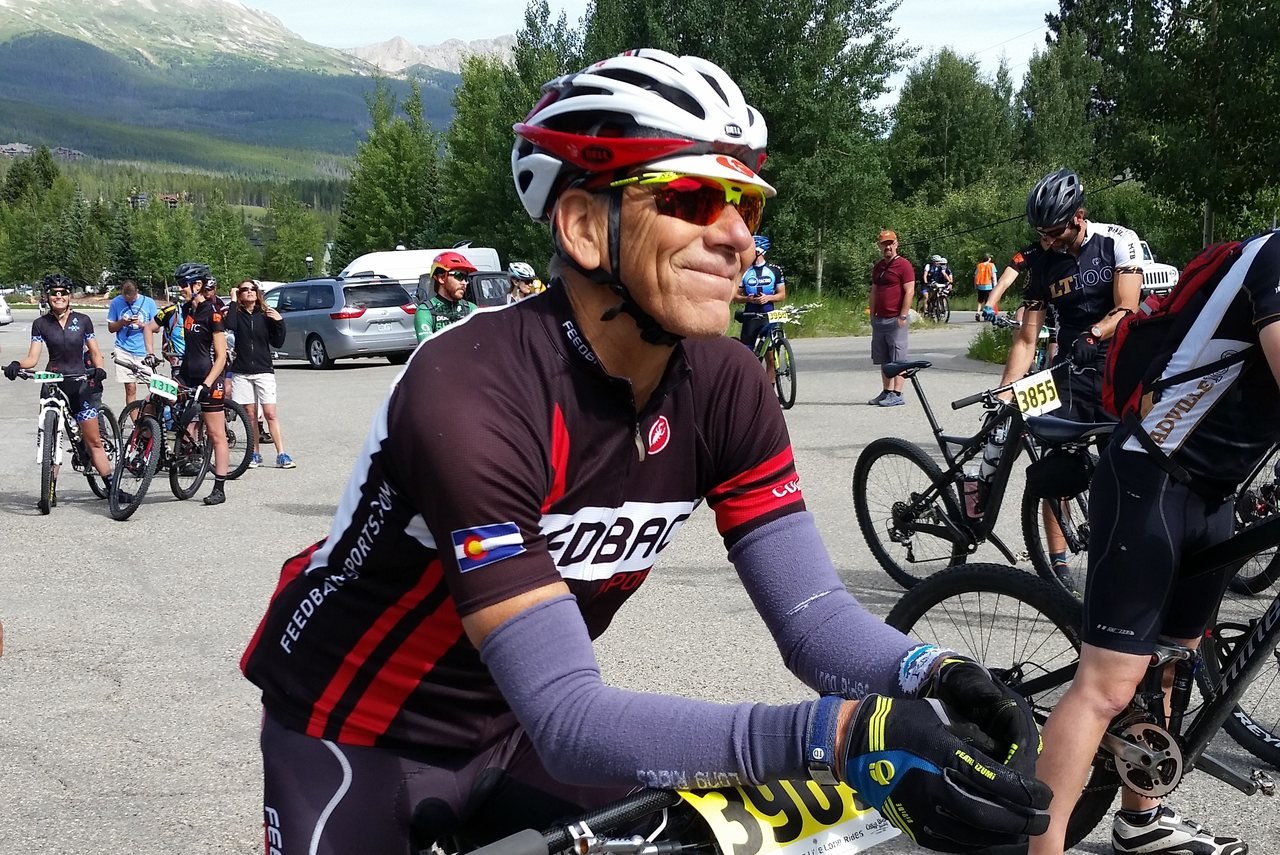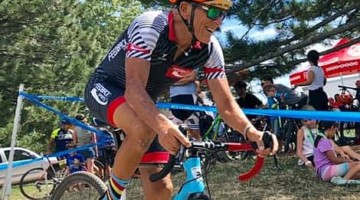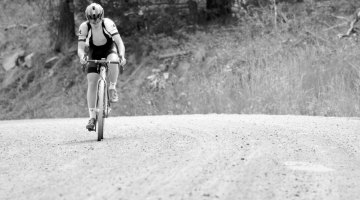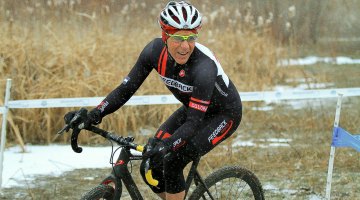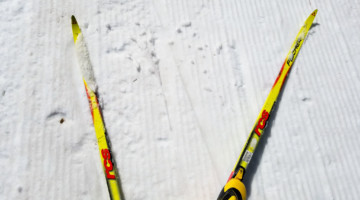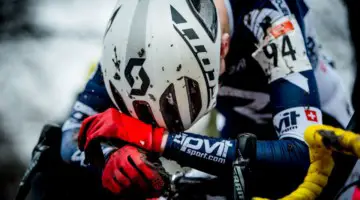by Lee Waldman
What we all wait for, train for and dream about has arrived. It’s cyclocross season!
The season began in Colorado on August 29 with the Back 2 Basics cyclocross series, a mid-week evening race series. In case you think that’s too early, over 230 riders showed up. Cyclocross is alive and well in Colorado. In other parts of the country, the season has started or is beginning very soon.
When the season starts, we are all faced with the reality that we have some critical gaps in our training that need to be filled to have a successful racing season. There are several options available to try to get up to speed in a short period of time.
One is to just “kiss it to the cyclocross gods” and trust the Cyclocross Universe and hope that things get better, soon. Another is to train harder and ride more, without really thinking about what that might look like. Third would be to create a plan to go from where you are now to where you want to be.
I’ve tried the first two and have had limited success. I think the third one is getting a bit closer to something that might work.
There’s a critical piece to that approach that I’ve found effective. Something that you may want to consider.
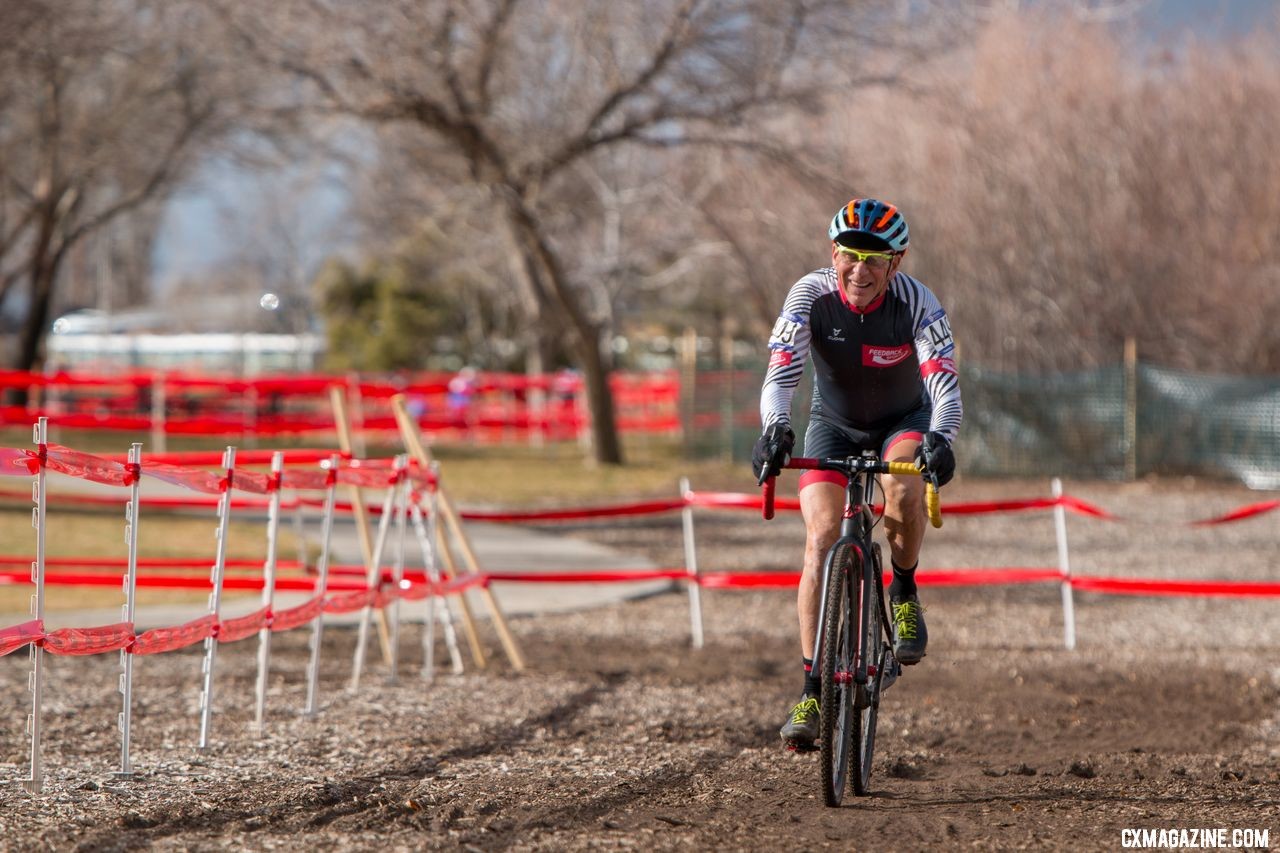
Lee Waldman is always looking to improve. He has some advice on how to get through the season successfully. Masters 65-69. 2018 Cyclocross National Championships. © A. Yee / Cyclocross Magazine
Craftmanship, Consciousness, Efficacy, Flexibility, Interdependence
In my other career, working with higher-ed faculty to improve their teaching, I teach them the five different states of mind: Craftsmanship, Consciousness, Efficacy, Flexibility and Interdependence. We are all either strong or weak in each one.
Craftsmanship refers to a person’s skillset or toolbox. In the context of cyclocross, this would be the technical and strategic skills that we have developed and are continually fine-tuning. If a rider is strong in Craftsmanship, then that rider is continually learning, analyzing, observing, practicing and incorporating the skills that will result in technically better riding. The stronger we are as cyclocross craftsmen, the better we ride our bikes in all conditions.
Consciousness is our ability to be aware of not only what we do well, but where are weaknesses might be. This is a critical state of mind to have to lead the rider to improvement. If we don’t think about our weaknesses, how can we work to overcome them?
Riders who are conscious think back to every training session and each race and then take the time for analysis. Do you think about not only what you did well, but what you need to work on before the next race? If you are that person, you’re strong in consciousness.
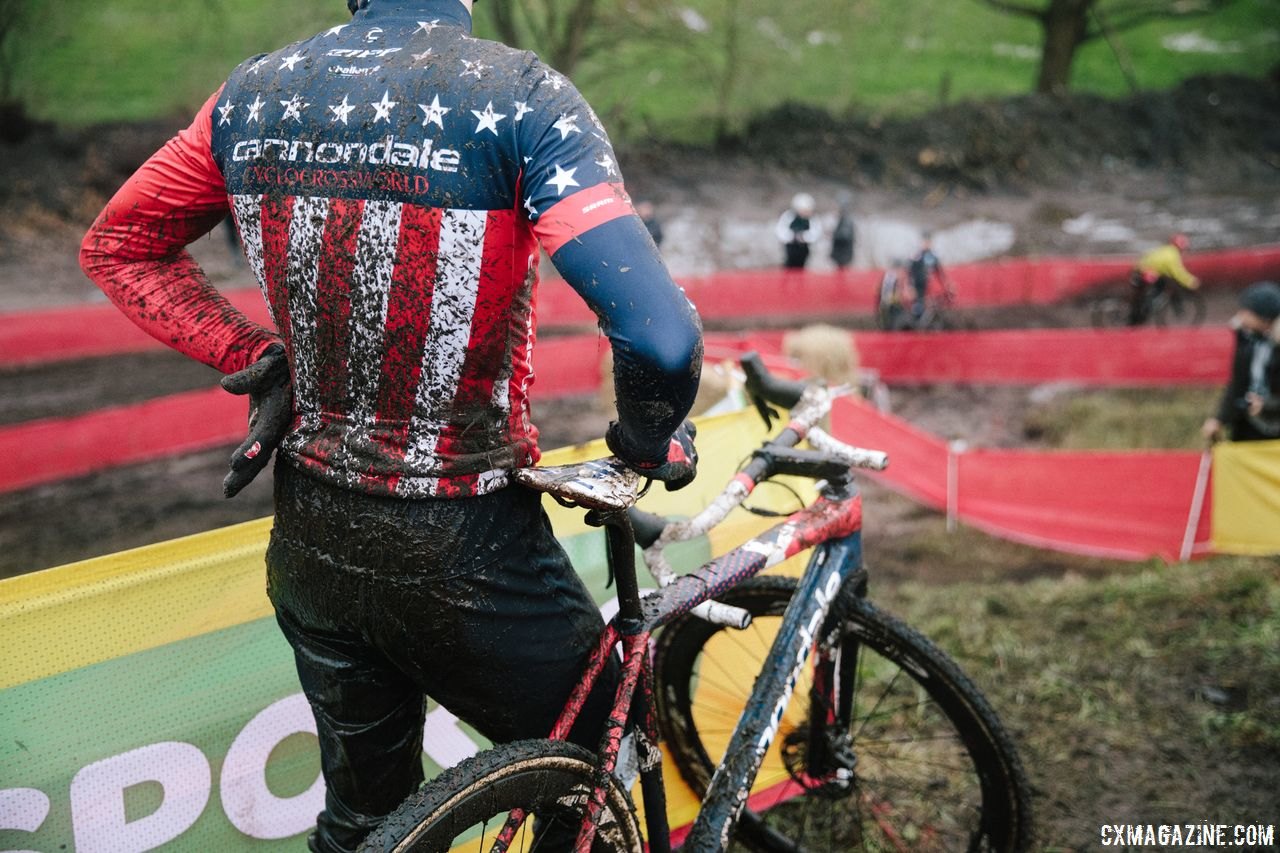
Conscious riders focus on where they can improve. 2017 World Cup Zeven Course Inspection. © J. Curtes / Cyclocross Magazine
Efficacy is that “I can do it” attitude that helps us look at every ride and each race as an opportunity to excel. Not only as an opportunity to trust chance but a time to put into practice the deeply held belief that we can and will succeed. We don’t head out the door or line up at the start feeling defeated. We know deep in our gut, that we’ll be successful.
Flexible people are the ones who are willing to change what they are doing. They know when what they’ve been doing hasn’t worked. It might be the way they are training, the way that they are or aren’t using rest days, nutrition, warm-up, you name it. In a race situation, they are the riders who analyze the way the course changes as the race proceeds. They refuse to keep beating that dead horse when a line changes or the course goes from bone dry to a mud-fest.
In short, they’re ready to move on. They are the ones that coaches love to work with because they need no convincing to try a new, different, and sometimes “weird” approach.
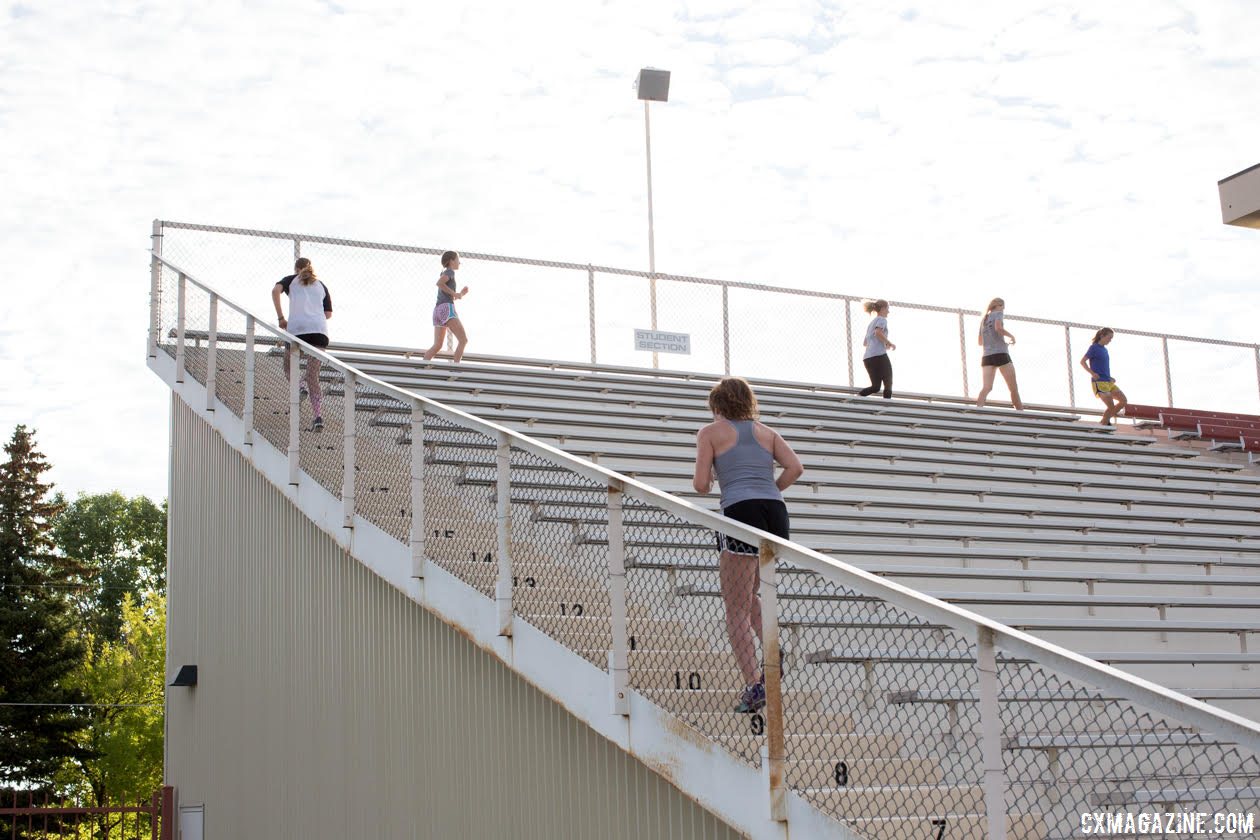
Flexibility requires being open to new ideas and new ways of training. Montana Cross Camp, Women, 2017. © Tom Robertson
Finally, people strong in Interdependence work well with others. In the cycling world, they are the team members who realize that there is “no I in team.” They help with the minutiae of running the team. They help build courses and tear them down. They mentor other riders. They also seek out advice from other more experienced riders and benefit greatly from coaching.
Make a Plan for Your Season
When I am teaching teachers, we do an exercise where I ask them to take a minute and think about themselves, with honesty. Cycling is obviously a hobby for most of us and not a profession, but I think the same framework can apply.
Which of the states of mind are you strongest in and which are you weakest? You can rely on the strong areas to help you grow as a rider but the weak areas are where you really need to work to grow.
For example, my weakest area is Efficacy. I tend to defeat myself before I even line up for a race by focusing on all the ways that I won’t do well. You would think I would have learned better after 30 plus years of cyclocross, but I still tend to come up with the reasons why I won’t do well. I’ve not slept well. I’ve been on my feet too long today. I’m too old. I trained too hard. Everyone looks fitter and faster than I do. You all know the drill. My work this year, is to figure out ways to become more efficacious.
And that takes us back to what I mentioned earlier. Make a plan for how to move through your season. Take into account your states of mind. Use your strong areas to bolster what you already do well. Think about how to build up your weak states so that they don’t hold you back. Change your worldview.
In the words of my friend John, for Masters races, racing cyclocross is preparation for life.” I’ll continue to work to develop my took box of ’cross skills, to be open to new coaching approaches, and to work well with my team and my coach. Those are areas in which I can always grow, but I’m already “there” in many ways. My work will focus on how I can be more positive.
It’s your turn. Where are you the strongest? Where do you need to work so that you can help this ’cross season to meet your vision of what it can be? Can you develop a plan to help you get there? Take some time to think about it, and I think you can.
Like Robert Frost said, there are many divergent ways to get to your goal. I’m not saying that working to your strengths and building your weaknesses will put you on par with Matthew van der Poel or Sanne Cant, but it will make you the best you. Now, where do you need to focus?
While you are ruminating, go ride your bike.













